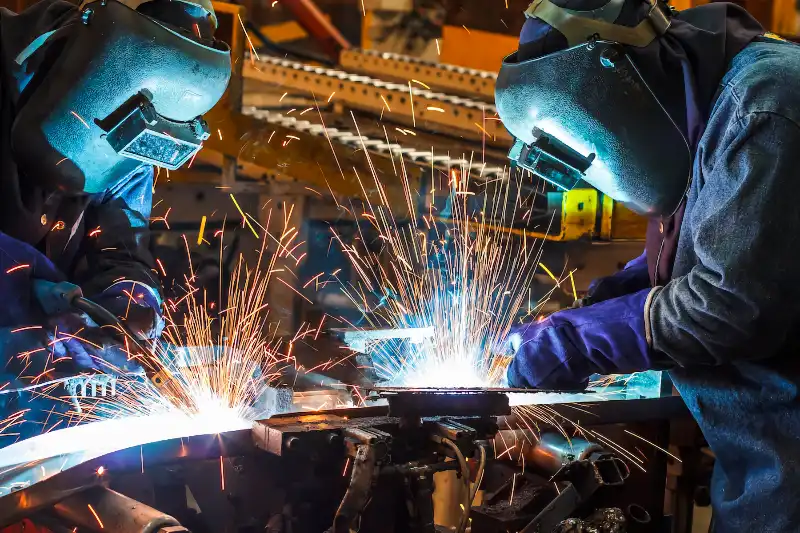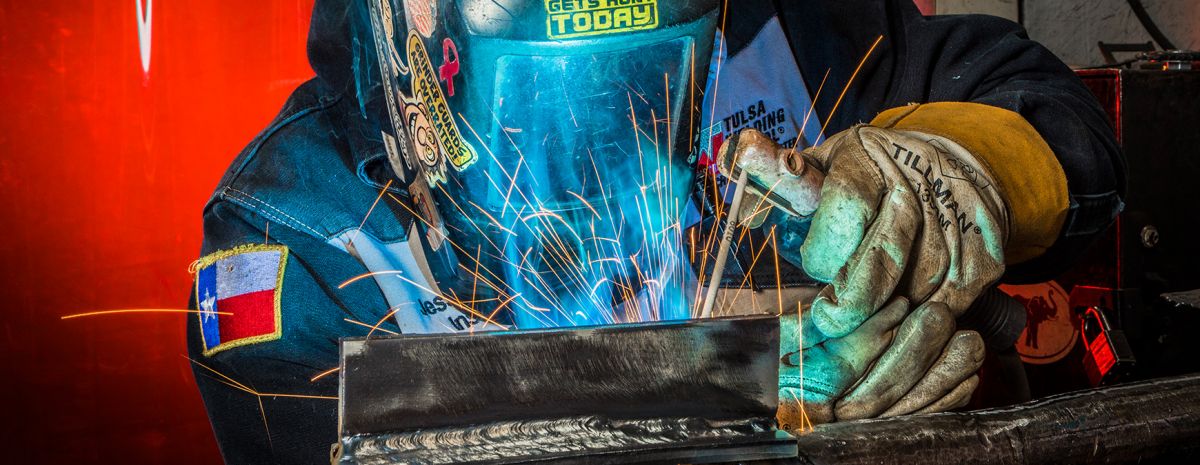Key methods to deal with warping in Montana Mobile Welding and Repair Belgrade
Common Welding Repair Service Issues and How to Address Them Efficiently
Welding repair services usually run into a variety of concerns that can jeopardize the stability of the final product. Common troubles consist of poor penetration, porosity, and imbalance, amongst others. Each defect offers one-of-a-kind difficulties that call for details approaches for resolution. Understanding these concerns is important for welders intending to improve their skills and results. This conversation will certainly explore these usual welding fixing issues and reliable approaches to address them.
Insufficient Penetration
Insufficient penetration takes place when the weld steel falls short to fully fuse with the base material, leading to weak joints and possible architectural failings. This problem commonly originates from inadequate warmth input, inaccurate electrode angle, or incorrect welding rate. Welders might encounter inadequate infiltration as a result of a mistake of the necessary criteria for a particular product thickness or kind. In addition, contamination on the base material's surface can hinder effective bonding, aggravating the problem. To address poor infiltration, welders should ensure proper setups on their devices and maintain a tidy work surface area. Regular inspection of welds is advised to identify any kind of shortages early, enabling prompt modifications and the avoidance of endangered architectural stability in bonded assemblies.
Porosity
Porosity is a common defect in bonded joints that materializes as little gas bubbles trapped within the weld steel. This flaw can compromise the integrity of the weld, resulting in reduced strength and potential failing under stress. Fabrication. Porosity generally emerges from contamination, dampness, or incorrect welding techniques, which allow gases to get away right into the molten weld swimming pool. To resolve porosity, welders must assure appropriate surface preparation, keep a tidy working environment, and use ideal welding criteria. Furthermore, picking the right filler material and protecting gas can reduce gas entrapment. Regular assessment and testing of welds can help recognize porosity early, assuring timely rehabilitative actions are taken, thus protecting the top quality and dependability of the welded framework
Misalignment
Imbalance in welding can arise from numerous aspects, consisting of incorrect configuration and thermal growth. Understanding the root creates is crucial for reliable resolution. Numerous correction strategies are readily available to realign elements and ensure structural integrity.
Root causes of Misalignment
Welding misalignment often comes from a selection of underlying problems that can jeopardize architectural stability. One primary reason is incorrect fit-up of components prior to welding, which can cause gaps and irregular surface areas. Variations in thermal expansion during the welding process can likewise result in distortion, specifically if the products being joined have various coefficients of expansion. In addition, insufficient fixturing and clamping might fall short to hold parts safely in position, resulting in activity during welding. Poorly maintained devices, consisting of welding machines and devices, might present disparities in the weld bead, additional contributing to misalignment. Driver mistake, stemming from not enough training or experience, can additionally play a significant duty in creating misaligned welds.

Improvement Strategies Available
Addressing misalignment efficiently calls for a combination of corrective methods customized to the specific concerns at hand. One common technique is using components or jigs to hold components in the correct position throughout welding, ensuring consistent alignment. Furthermore, preheating the products can help minimize distortion and enhance fit-up. For substantial imbalance, mechanical realignment techniques, such as making use of hydraulic jacks or clamps, can be used to deal with the setting before welding. Post-weld warmth therapy might additionally be necessary to ease stresses brought on by misalignment. Finally, careful assessment and modification during the setup phase can avoid misalignment problems from becoming significant troubles, advertising a smoother welding procedure and improving total architectural integrity.
Distortion
Distortion is a common difficulty in welding that can develop from numerous variables, consisting of unequal heating & cooling. Understanding the root causes of distortion is necessary for implementing reliable avoidance strategies. Addressing this issue not just improves structural stability however additionally enhances the total high quality of the weld.
Reasons for Distortion
When based on the intense warm of welding, products often go through changes that can result in distortion. This sensation largely occurs from thermal development and tightening throughout the welding process. As the weld area warms up, the material expands; upon cooling, it gets, which can develop inner stress and anxieties. In enhancement, uneven home heating across a work surface can exacerbate these anxieties, leading to bending or bending. The sort of material additionally plays a substantial duty; metals with differing thermal conductivity and coefficients of development may respond in a different way, causing unforeseeable distortions. Bad joint layout and insufficient fixturing can contribute to misalignment throughout welding, raising the probability of distortion. Comprehending these reasons is important for reliable welding repair service and prevention methods.
Avoidance Techniques
Efficient prevention techniques for distortion throughout welding concentrate on managing heat mig welding set input and making sure proper joint design. Preserving a consistent heat input assists to lessen thermal expansion and contraction, which can result in distortion. Making use of methods such as pre-heating the workpiece can also minimize the temperature slope, advertising uniform heating. In addition, choosing suitable joint layouts, such as T-joints or lap joints, can improve stability and decrease tension focus. Applying correct fixturing to secure the work surfaces in place further help in keeping alignment during the welding process. Ultimately, staggered welding sequences can distribute warm extra uniformly, protecting against local distortion. By using these approaches, welders can greatly decrease the chance of distortion and enhance the total quality of their welds.
Breaking
Cracking is an usual issue experienced in welding repairs, frequently arising from different variables such as inappropriate cooling prices, material choice, or insufficient joint preparation. The incident of fractures can greatly compromise the honesty of the weld, resulting in potential failures throughout operation. To resolve this issue, welders must initially evaluate the origin, ensuring that materials are compatible and appropriately chosen for the particular application. Furthermore, controlling the air conditioning rate throughout the welding process is vital; quick cooling can cause tension and cause fracturing. Proper joint layout and prep work additionally add to decreasing the danger. Applying these techniques can enhance weld quality and durability, eventually lowering the chance of breaking in completed weldments.

Incomplete Combination
A significant problem in welding repair services is insufficient fusion, which occurs when the weld metal does not properly bond with the base product or previous weld passes - Montana Mobile Welding and Repair. This flaw can cause weak points in the joint, potentially endangering the honesty of the bonded framework. Factors adding to insufficient blend consist of inadequate warm input, improper welding strategy, and contamination of the surfaces being joined. To resolve this concern effectively, welders need to assure appropriate pre-weld cleaning and surface preparation, as well as adjust their welding criteria to accomplish ample penetration and blend. Regular evaluation throughout the welding procedure can additionally assist recognize insufficient blend early, enabling timely restorative steps to enhance the total quality of the weld
Overheating
While welding repair work can enhance architectural stability, overheating provides a considerable obstacle that can lead to material destruction. Extreme warm during welding can modify the mechanical buildings of steels, causing decreased stamina, increased brittleness, and warping. This sensation is particularly vital in high-stress applications where architectural dependability is extremely important. Recognizing getting too hot can include visual inspections for staining or distortion, as well as monitoring temperature throughout the welding process. stainless steel mig wire To reduce the threats associated with overheating, welders ought to employ suitable techniques, such as controlling warmth input, readjusting travel speed, and making use of suitable filler materials. In addition, carrying out pre- and post-weld warmth treatments can help recover material homes and improve the general high quality of the repair service, making certain long-lasting efficiency and safety.
Often Asked Questions
What Are the Common Indications of a Welding Flaw?

Exactly How Can I Examine My Welds for Top quality?
To test welds for high quality, one can make use of visual examinations, ultrasonic testing, and radiographic approaches. smaw welding Each technique guarantees structural stability, recognizes problems, and verifies adherence to defined criteria, eventually boosting the dependability of the bonded joints.
What Safety and security Preventative Measures Should I Take While Welding?
When welding, one must focus on security by using ideal individual safety devices, ensuring correct ventilation, safeguarding combustible materials away, preserving a clean workspace, and knowing surroundings to avoid injuries and mishaps.
Can I Repair a Weld Without Redoing the Entire Joint?
Fixing a weld without redoing the whole joint is feasible, depending on the damages (Belgrade). Methods such as grinding, adding filler material, or utilizing a welding procedure can successfully attend to specific flaws while maintaining the surrounding framework
What Tools Are Essential for Reliable Welding Repairs?
Necessary tools for effective welding fixings include a welding maker, cord brush, grinder, safety gear, clamps, and filler materials. Each device plays an important duty in making certain quality and security during the repair service procedure. Porosity typically develops from contamination, moisture, or incorrect welding techniques, which enable gases to get away right into the molten weld swimming pool. Badly conserved equipment, consisting of welding equipments and devices, may introduce inconsistencies in the weld grain, further contributing to misalignment. When subjected to the extreme heat of welding, materials often go through changes that can lead to distortion. Splitting is a typical problem come across in welding repair work, often resulting from numerous factors such as improper cooling rates, product selection, or inadequate joint preparation. A substantial concern in welding repair services is insufficient combination, which takes place when the weld steel does not appropriately bond with the base product or previous weld passes.